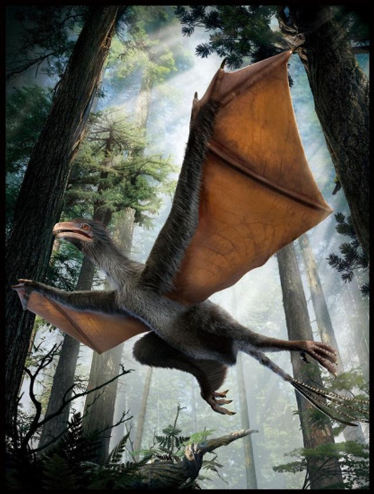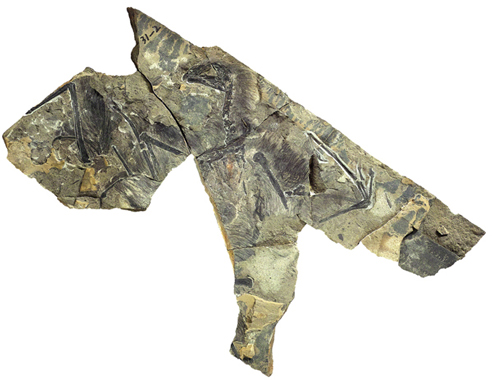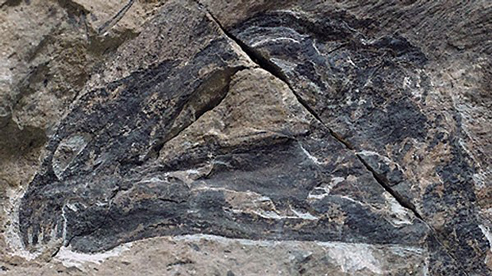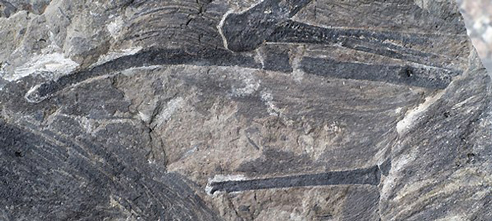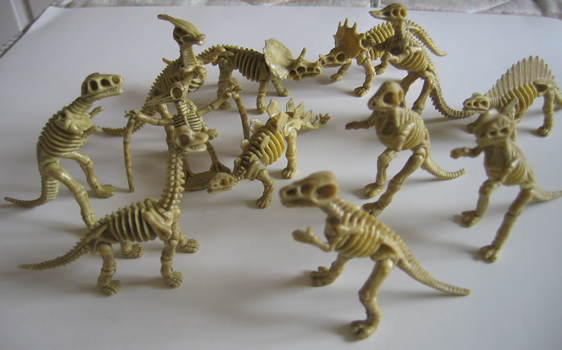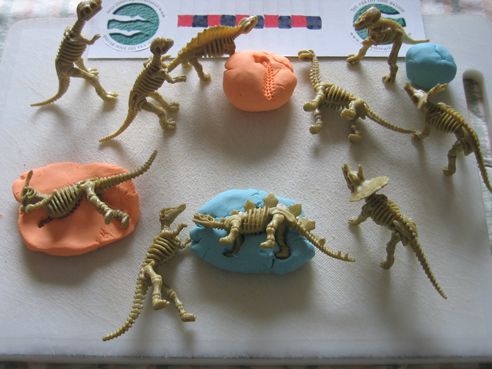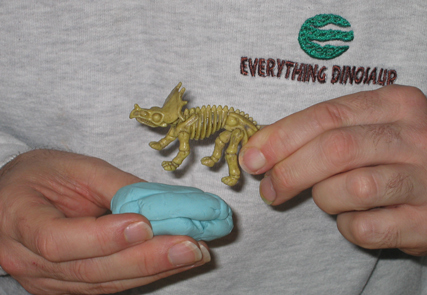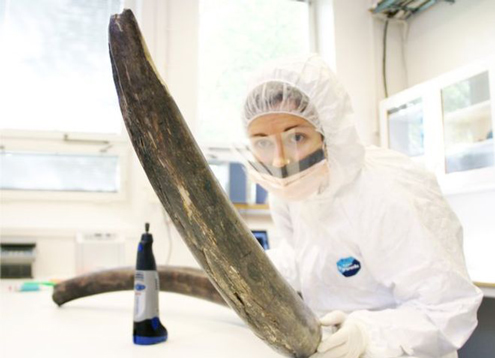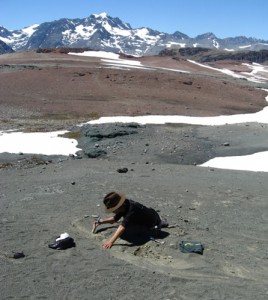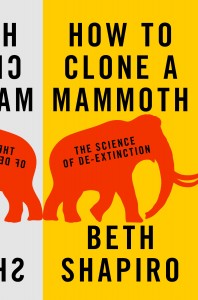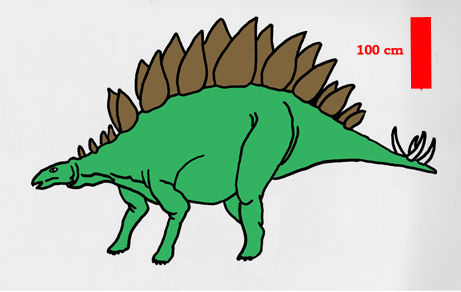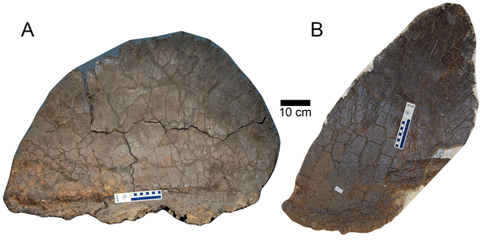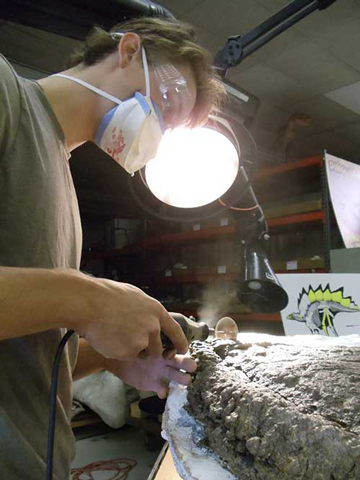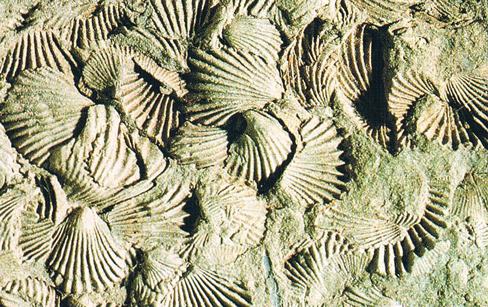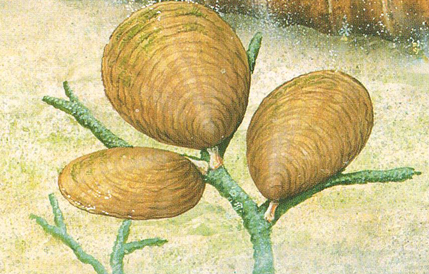Yi qi – The Remarkable Dinosaur That Thought it was a Bat
Chinese Dinosaur Unveil Yi qi Another Weird and Wonderful Theropod
Hot on the heels of Chilesaurus* comes the second bizarre theropod dinosaur to be named this week, the wonderful and weird Yi qi (pronounced ee-chee) from the Hebei Province of northern China. A single specimen is known, this was discovered by a local farmer and subsequently sold to a museum in Shandong Province, careful preparation of the specimen, which although fractured, does reveal most of the anatomical details of this little dinosaur.
Yi qi
Remarkably Y. qi possessed a long, rod-like bone on each wrist that extended backwards. No other theropod dinosaur (or any dinosaur for that matter), had a bone quite like this. Comparative analysis with extant animals suggests that this bone helped to support a flap of skin that could be stretched out to form a structure like a bat’s wing. The absence of evidence for large muscles around the chest probably rules out any form of active, powered flight, but it is likely that this pigeon-sized dinosaur could have been a glider.
Not the dinosaur equivalent of Batman, more like a dinosaur equivalent of a flying squirrel.
The Second Bizarre Theropod Announced this Week – Yi qi
Picture credit: Dinostar/Chinese Academy of Sciences
To read Everything Dinosaur’s earlier article about the research into Chilesaurus: Chilesaurus – A Dinosaur Designed by a Committee.
Examining the Fossil Material
The fossil material has been studied (and fully prepared) by scientists at the Chinese Academy of Sciences (Institute of Vertebrate Palaeontology and Palaeoanthropology – IVPP) and researchers from Linyi University (Shandong Province). Unlike a number of other feathered dinosaur specimens from China, the palaeontologists are confident that this specimen (STM 31-2) currently housed at the Tianyu Museum of Nature in Pingyi County, (Shangdong Province), had not be tampered with or augmented by unscrupulous fossil dealers hoping to inflate any purchase price.
The Holotype Fossil Specimen (STM 31-2) Yi qi
Picture credit: Zheng Xiaoting
This little dinosaur probably weighed less than 400 grammes and that bat-like wingspan was around sixty centimetres across The short, deep skull was less than four centimetres long. It forms part of an amazing fauna that thrived in a forested environment some 160 million years ago. Over the last ten years or so, Chinese scientists have built up a very detailed picture of the palaeoenvironment in this part of northern China during the Middle to Late Jurassic.
An Ancient Forest
The forests consisted of ancient ferns, ginkgos and conifers and breaking up the sub-tropical woodlands were large, shallow lakes. Nearby volcanoes occasionally erupted and buried the surrounding area with a huge layer of very fine dust trapping and killing everything that got buried. It is thanks to these frequent eruptions that such a wealth of ancient material has been so exquisitely preserved.
The Yi qi fossil shows evidence of long, filamentous feathers on the limbs as well as signs of a membrane of skin attached to that rod-like wrist bone and between the three digits.
The tiny claws on those digits suggest that this dinosaur could have climbed up trees, certainly an arboreal existence has been proposed. Yi qi probably hunted insects up in the branches, climbing up the trunks of trees and gliding from tree to tree.
A Close up of the Skull of Yi qi
Picture credit: Zheng Xiaoting
A Little Dinosaur with Big Eyes
The large orbit (eye socket) seen in the picture above suggests that this little dinosaur had big eyes providing stereoscopic vision, all the better to judge distances and to spot its insect prey amongst the dark, leafy canopy, Those short, peg-like teeth would have been more than a match for any insect that this gliding dinosaur encountered. It probably was not agile enough to catch prey in mid flight but probably scurried along branches looking for insects and spiders.
It would have had plenty of company in its forest home. There were lots of pterosaurs around, along with numerous feathered dinosaurs and a large number of bizarre mammals including some recently described docodonts. To read an article about the remarkable fauna from the Daohugou Beds of the Tiaojishan Formation: Unravelling the Sequence of Deposition in North-eastern China.
To read about the peculiar mammals from this part of China (Middle to Late Jurassic): Widespread Ecological Diversity Amongst Early Mammals from China.
An Example of Convergent Evolution
Picture credit: Zheng Xiaoting
Strange Rod-like Bone Extensions
The rod-like bone extending from each wrist is not found in any other known member of the Dinosauria, but similar features are found in a number of gliding and flying tetrapods. At first the scientists were stumped by this strange anatomy, Xu Xing, one of the authors of the academic paper stated:
“We spent quite some time to identify the body structure of Yi qi, because the specimen is so different. At first we did not have the slightest idea about what was the rod-like bone.”
It was only after a researcher undertook a study on extant flying vertebrates that the connection was made.
Zheng Xiaoting (Linyi University), another co-author of the study explained:
“Living in the mid period of the Jurassic, the dinosaur Yi qi could be a pioneer in the evolution of flying ability.”
The rod-like wrist bones are an example of convergent evolution, that is, when unrelated organisms evolve the same adaptations, such as tail flukes in dolphins and ichthyosaurs. Not only is this one of the most remarkable theropod fossils discovered to date, Yi qi is one of the smallest dinosaurs so far described.
It also has several other claims to fame, for example, with a binomial, formal scientific name of just four letters, it has the shortest name for any member of the Dinosauria that we at Everything Dinosaur can think of. In addition, as the fossil material is part of the Tianyu Museum of Nature’s Collection, it is part of the largest dinosaur fossil collection housed in a single museum anywhere in the world.
A Huge Number of Dinosaur Specimens
Back in 2010, the Guinness Book of Records announced that this museum had the greatest number of dinosaur specimens on exhibit at any one time. The museum has over 28,000 square metres of exhibition space, a large proportion of which is dedicated to the Dinosauria. The museum claims to possess over 1,100 different dinosaur specimens and tens of thousands of other vertebrate fossils in its collection.
Yi qi has been phylogenetically assigned to the clade Maniraptora, specifically being placed in the Family Scansoriopterygidae, a very odd group of dinosaurs, known for their small size, assumed arboreal habits, long arms and elongated third fingers. In all other members of the theropoda it is the second digit that is the longest. The Scansoriopterygidae contains a number of genera, with Epidexipteryx (E. hui) being perhaps the best known since it appeared in an episode of the BBC documentary series “Planet Dinosaur” back in 2011. Epidexipteryx hui was named and described in 2008.
An Illustration of Epidexipteryx
Picture credit: Nature
To view models and replicas of bizarre Chinese dinosaurs including Yi qi (whilst stocks last): PNSO Age of Dinosaurs Models and Replicas.


